-
Recent Posts
- It’s Time to Name the “Wall Street Financiers” in the Epstein Files
- Trump’s “Big Beautiful Bill” Is a Grotesque Giveaway to Fossil Fuel Billionaires While Adding $3.3 Trillion to Nation’s Debt
- Senator Chris Murphy Charges that Trump “Has Opened a Channel for Bribery”
- Congressman Casten: Trump’s Assault on the Rule of Law Is Causing Capital Flight Out of U.S. by Foreign Investors
- Trump’s Approval Rating Drops to 80-Year Low; IMF Says U.S. Tariffs Now Exceed the Highs During the Great Depression
- Nasdaq Has Lost More than 3,000 Points Since Trump’s First Full Day in Office in 2025; the Pain Has Barely Begun
- The Bond Crisis Last Week Was a Global No-Confidence Vote in U. S. President Donald Trump
- Trump’s Tariff Plan Guts $5 Trillion in Stock Value in Two Days; Senator Warren Calls for Emergency Action Before Markets Open on Monday
- Trump’s Attacks on Big Law, Universities, and the Media Have a Common Goal: Silence Dissent Against Authoritarian Rule
- Trump Administration Gives All Clear to Laundering Money through Shell Companies and Bribing Foreign Officials
- Four Megabanks on Wall Street Hold $3.2 Trillion in Uninsured Deposits – Which May Explain Senator Schumer’s Pivot to the GOP to Stop a Government Shutdown
- Here’s What Came Crashing Down Yesterday for Trump’s “Genius” Guy, Elon Musk: Tesla Stock, Access to Twitter (X), His Years of Secret Calls with Putin
- After Banning the Associated Press, Trump Is Now Targeting Specific Journalists That He Wants to See Fired
- Closely Watched Atlanta Fed Model Predicts Negative U.S. Growth in First Quarter
- Trump’s Gangster Diplomacy Makes Front Page Headlines Around the Globe
- Who Benefits Alongside Elon Musk If He Succeeds in Killing the CFPB: the Megabanks on Wall Street that Underwrite His Tesla Stock Offerings
- In Trump 1.0, the State Department Used Taxpayer Money to Publish a Book Elevating Elon Musk to a Superhero; It Was Funded by USAID, the Agency Musk Wants to Quickly Shut Down
- News Host Joy Reid Raises Threat of Trump Selling U.S. to Putin; Ten Days Later Her Show Is Cancelled
- Elon Musk’s DOGE Appears to Be Violating a Court Order; It Has Taken Down Hundreds of YouTube Videos that Educate Americans on How to Avoid Being Swindled
- Barron’s Releases Audio of Jamie Dimon Cursing Out His Workers at a Town Hall, as Dimon Plans to Dump Another One Million JPM Shares
- There’s One Federal Investigative Agency that Neither Trump nor Elon Musk Can Touch: It Just Opened an Investigation into DOGE
- Elon Musk’s Companies Were Under Investigation by Five Inspectors General When the Trump Administration Fired Them and Made Musk the Investigator
- Donald Trump Gives the Greenlight to Goldman Sachs and JPMorgan Chase to Return to Bribing Foreign Officials
- After Tech Geeks Built a Back Door to Loot Billions from FTX, Republicans Refuse to Investigate What Elon Musk’s Tech-Squad Did Inside the U.S. Treasury’s Payment System
- Former Prosecutor, Now U.S. Senator, Informs Tesla That CEO Musk May Be Violating Federal Law and to “Preserve All Records”
- Trump’s Hedge Fund Guy Is Now Overseeing the U.S. Treasury, IRS, OCC, U.S. Mint, FinCEN, F-SOC, and the Consumer Financial Protection Bureau
- As Elon Musk Begins Shutting Down Payments to Federal Contractors, a Strange Money Trail Emerges to His Operatives Inside the U.S. Treasury’s Payment System
- JPMorgan Chase Charged by Yet Another Internal Whistleblower with Cooking the Books
- We Asked Google’s AI Search Model, Gemini, Questions About the Fed and Wall Street Megabanks: It Got the Answers Dead Wrong
- With Trump and Melania’s Crypto Coins Likely to Raise Legal Challenges, Why Didn’t Trump Fire the SEC’s Inspector General in His Purge of IGs?
- Fossil Fuel Industry Could End Up Paying Tens of Billions for LA Wildfires and Deceiving the Public on Climate Change for Decades
- It’s Being Called the Biggest Grift by a President in U.S. History: Trump and First Lady Launch their Own Crypto Coins
- Trump Plans to Install a Fracking CEO to Head the Energy Department and Declare a National Emergency on Energy to Gain Vast Powers
- Fossil Fuel Money Played a Role in the Los Angeles Fires and the Push to Install Pete Hegseth as Secretary of Defense
- When It Comes to Wealth Retention in Retirement, Concrete May Be the New Gold
- Wall Street Watchdog Warns “Clock Is Ticking on a Coming Catastrophic Financial Crash”
- Wall Street Is Sending the Same Message to Americans on Fossil Fuel Financing that It Sent on Cigarettes: Drop Dead
- In a Six-Week Span, this Dark Pool with a Curious Past Traded 3.7 Billion Shares
- Wall Street’s Lobby Firm Hired Eugene Scalia of Gibson Dunn to Sue the Fed for Jamie Dimon
- Postmaster General Louis DeJoy Made $561,051 in Compensation in 2024, as Mail Costs Spiked and Delivery Deteriorated
- Fed Chair Jay Powell Sends a Bold Message to Trump and Tanks the Dow by 1123 Points
- The Head of Fixed Income at T. Rowe Price Makes the Scary Case for the 10-Year Treasury to Spike to 6 Percent
- $663 Billion in Cash Assets Have Gone Poof at the Largest U.S. Banks
- Donald Trump to Ring Bell at New York Stock Exchange Today as Hit List Posters Appear in Manhattan Targeting Wall Street CEOs
- Trump Has a Slush Fund to Prop Up the Dollar – Will He Use It to Prop Up Bitcoin Instead?
- A CEO Assassination; a Billionaire Heiress/NYPD Commissioner; a Secret Wall Street Spy Center – Here’s How They’re Connected
- Despite More than 1600 Tech Scientists Signing a Letter Calling Crypto a Sham, Trump Names a Crypto Cheerleader for SEC Chair
- The Fed Rings a Warning Bell: Hedge Funds and Life Insurers Are Reporting Historic Leverage
- Trump’s Nominee for FBI Director, Kash Patel, Has Businesses Financially Intertwined with Trump
- Donald Trump Is at Risk of Getting Named in a Fossil Fuels Conspiracy Lawsuit
Category Archives: Uncategorized
Cleary Gottlieb – Outside Counsel to Wall Street’s Serially Bailed Out Megabanks – Tarnishes the FDIC Chair in its So-Called “Independent” Report
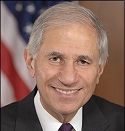
By Pam Martens and Russ Martens: May 8, 2024 ~ Yesterday, the Big Law firm Cleary Gottlieb released its so-called “independent review” of charges of sexual harassment at the Federal Deposit Insurance Corporation (FDIC). Although no employee is charging Martin Gruenberg, the Chair of the FDIC, with sexual harassment, Cleary Gottlieb seems to go out of its way to paint Gruenberg in a negative light in the report – 108 times in fact. Gruenberg held the deciding vote at the FDIC last July when the bank regulator approved moving forward with proposed new rules to significantly raise the capital levels at the megabanks on Wall Street, particularly those holding trillions of dollars in derivatives off their balance sheet. These include the same banks that secretly received $16 trillion in cumulative emergency loans from the Federal Reserve from December 2007 to July 2010 because they were undercapitalized and teetering on insolvency, as … Continue reading
JPMorgan Chase and Its Regulators Are Hiding Dark Trading Secrets at the Largest and Riskiest U.S. Bank

By Pam Martens and Russ Martens: May 7, 2024 ~ Last Wednesday, JPMorgan Chase, the publicly-traded parent of the largest federally-insured bank in the United States as well as a five-count felon, revealed in a filing with the Securities and Exchange Commission that on top of the $348 million it paid out in March to two of its banking regulators for sketchy trading violations involving “billions” of trades on 30 global trading venues, it “expects to enter into a resolution with a third U.S. regulator that will require the Firm to, among other things, pay a civil penalty of $100 million….” (See “Trading Venues Investigations” on page 168 of the SEC filing at this link.) JPMorgan Chase did not name this third regulator but Bloomberg News reported that it is the Commodity Futures Trading Commission. The two federal banking regulators that imposed the trading fines in March are the Office of the … Continue reading
Campus Protests Over Gaza Open a Pandora’s Box for Wall Street Megabanks that Underwrote $8 Billion of Israel’s Bonds in March
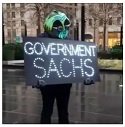
By Pam Martens and Russ Martens: May 6, 2024 ~ The pro-Palestinian protestors on college and university campuses across the U.S. have opened a pandora’s box for the Wall Street megabanks that underwrite billions of dollars in Israel bonds – including $8 billion in March of this year – at a time when Israeli Prime Minister Benjamin Netanyahu’s conduct of the war in Gaza has come under broad condemnation. U.S. Senator Bernie Sanders of Vermont, who is Jewish, described Netanyahu’s war operation as follows on the April 28 edition of CNN’s State of the Union: “Right now, what Netanyahu’s right-wing, extremist and racist government is doing is unprecedented in the modern history of warfare. They have killed in the last six-and-a-half months 33,000 Palestinians, wounded 77,000, two-thirds of whom are women and children. “They have destroyed over 60 percent of the housing. They have destroyed the health care system. They have … Continue reading
Wall Street’s Megabanks Have Trillions of Dollars Off-Balance Sheet, in a Replay of Accounting Hubris that Led to the 2008 Wall Street Collapse
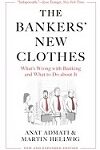
By Pam Martens and Russ Martens: May 2, 2024 ~ When the Financial Crisis Inquiry Commission released their final forensic report on the causes of the 2008 financial collapse on Wall Street – the worst collapse since the 1929-1932 collapse – it pointed to hidden leverage in off-balance sheet entities at the megabanks on Wall Street as a key driver of the crisis. It wrote: “From 2000 to 2007, large banks and thrifts generally had $16 to $22 in assets for each dollar of capital, for leverage ratios between 16:1 and 22:1. For some banks, leverage remained roughly constant. JP Morgan’s reported leverage was between 20:1 and 22:1. Wells Fargo’s generally ranged between 16:1 and 17:1. Other banks upped their leverage. Bank of America’s rose from 18:1 in 2000 to 27:1 in 2007. Citigroup’s increased from 18:1 to 22:1, then shot up to 32:1 by the end of 2007, when Citi … Continue reading
JPMorgan Remains the Second Largest Money Market Fund Manager, Despite Needing Billions in Money Market Bailouts from the Fed in 2020
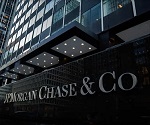
By Pam Martens and Russ Martens: April 30, 2024 ~ The Office of Financial Research (OFR), the federal agency created after the financial crash of 2008 to keep federal banking regulators on top of threats to financial stability, has posted an interactive chart showing the largest managers of Money Market Mutual Funds in the U.S. Alarmingly, the parent of the largest and riskiest bank in the United States – JPMorgan Chase – is also the second largest Money Market Mutual Fund manager. According to the OFR, as of March 31, 2024, JPMorgan was managing $657.9 billion in money market funds, second only to Fidelity, which on the same date was managing $1.3 trillion in money market funds. The data comes from Securities and Exchange Commission Form N-MFP2. JPMorgan’s federal regulators have failed to stem the bank’s growth despite the fact that JPMorgan Chase has been tapping massive bailouts from the Federal … Continue reading
The First Bank Failure of 2024 Leaves a 1-Cent Stock for Investors and $667 Million in Losses for the FDIC

By Pam Martens and Russ Martens: April 29, 2024 ~ Quietly on Friday, the FDIC announced the first federally-insured bank failure of 2024, the publicly-traded Republic First Bancorp (ticker FRBK) which did business as Republic Bank. In an unsettling sign of the times, this federally-insured bank was trading at 1-cent on Friday; down from 27-1/2 cents last September when we first reported on its dire condition. Do Americans really want to see a bank that’s holding their life savings to be trading as a penny stock? Yes, it’s true that no depositor has lost a penny in a federally-insured bank since the creation of federal deposit insurance in 1933 if they remained under the federal insurance cap on deposits. Currently, that insurance cap is $250,000 per depositor, per bank. But still, public confidence in the safety and soundness of the U.S. banking system would suggest that the phrases penny stock and … Continue reading
Catch and Kill Protection Rackets: Trump, Weinstein, Epstein and Wall Street

By Pam Martens and Russ Martens: April 26, 2024 ~ Editor’s Note: This article has been edited and updated from an earlier version, published in 2020. Trump and Catch and Kill: Yesterday, David Pecker, the former Chairman and CEO of American Media Inc. (AMI), the parent company of the National Enquirer tabloid, testified for a third day in the 34-count criminal trial of former President Donald Trump in New York. Pecker continued to expand on the sordid details of a catch and kill operation he had agreed to operate with the active involvement of Trump and his then attorney, Michael Cohen. The operation involved buying up stories about Trump’s salacious affairs with women and then killing them from publication in order to help Trump’s campaign for the presidency in 2016. There was also an understanding that Pecker would run negative articles about Trump’s political opponents in the National Enquirer. During opening … Continue reading
Wall Street’s Judge Shopping Continues: It’s Trying to Stop the FTC’s Ban on Worker Handcuffs Known as Non-Compete Agreements
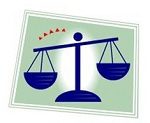
By Pam Martens and Russ Martens: April 25, 2024 ~ Sullivan & Cromwell, the go-to law firm for Wall Street in the past, has become a case study in how not to manage one’s corporate reputation. (See Wall Street’s Go-To Law Firm, Sullivan & Cromwell, Got in Bed with Crypto; Now Its Reputation Is Being Hammered.) Apparently, having previously represented FTX fraudster, Sam Bankman-Fried, and then grabbing FTX’s bankruptcy proceeding and billing $180 million, is not enough shame for Sullivan & Cromwell to heap on its reputation. It is now listed as the Big Law firm that filed a federal lawsuit yesterday on behalf of the corporate front groups, the U.S. Chamber of Commerce, the Business Roundtable, and others, to stop the Federal Trade Commission’s (FTC’s) new rule banning non-compete agreements for most workers. (An 8-attorney law firm in Texas, Potter Minton, is also listed on the filing for the plaintiffs.) Sullivan … Continue reading
The Fed Tallies Up a Big Threat to Financial Stability in the U.S.: “Runnables” at $21.3 Trillion
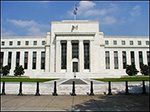
By Pam Martens and Russ Martens: April 23, 2024 ~ Last Friday, the Federal Reserve released its semi-annual Financial Stability Report. In the prior five years, the spring edition of the Fed’s Financial Stability Report was released in May. This year, for reasons we can only guess at (nervously), the Fed released the spring edition early, in April. Given that last spring the second, third and fourth largest bank failures in U.S. history occurred, handing over $30 billion in losses to the federal Deposit Insurance Fund, and one of those banks (Silicon Valley Bank) experienced the fastest run on its deposits in U.S. history, one particular item in the new report that caught our attention was this: “Overall, estimated runnable money-like financial liabilities grew 8.8 percent to $21.3 trillion (75 percent of nominal GDP) over the past year, as a decline in uninsured deposits was more than offset by an increase in assets under management … Continue reading
Billionaire-Owned Media Has Gone Full Throttle to Save Fellow Billionaire, Jamie Dimon

By Pam Martens and Russ Martens: April 22, 2024 ~ The Washington Post Editorial Board appears to have sipped the same kool aid as Bloomberg News. As we’ve frequently reported in the past, Bloomberg News has spent the better part of the last decade attempting to brainwash the public into believing that the head of JPMorgan Chase, Jamie Dimon, is a respected statesman of Wall Street. (See here, here, and here.) In reality, JPMorgan Chase has admitted to an unprecedented five criminal felony counts with Dimon at the helm and paid fines in the tens of billions of dollars for an additional crime wave that rivals an organized crime family. Billionaire Michael Bloomberg, the former Mayor of New York, is the majority owner of Bloomberg LP, the owner of Bloomberg News. In 2016, Michael Bloomberg even co-authored an opinion piece with Dimon. The same year, the New York Post reported that JPMorgan Chase was … Continue reading

